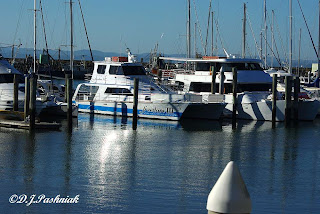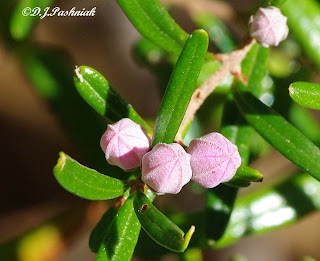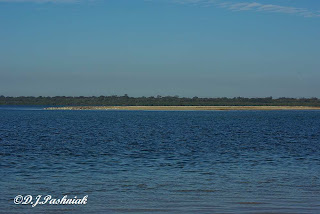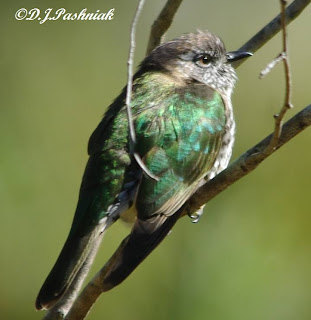For more bird photos visit the Bird Photography Weekly.
It is a little less than two hours - if the traffic is good! - from where I live at the southern end of the Great Sandy Strait. I left earlier than we needed to so we had time to sit at a cafe right on the boardwalk around the harbor and enjoy a drink before we left. There were small trees in tubs around the outside eating area and a bird flew in and starting singing. When I looked I saw it was a Sparrow. Early colonists took sparrows with them wherever they went around the world and they were introduced to Australia also. However, they seem to stay in larger population areas and I have not seen any close to where I live. This was the first one I had seen since I began photographing birds some years ago. (All photos enlarge when clicked on.)

There are a number of boats to choose for a whale watching tour. We decided on the Freedom 111 - a 58 foot catamaran which takes a maximum of 45 passengers. We found the crew very helpful and friendly and thoroughly enjoyed the trip. It was a 3/4 day tour and we were served morning and afternoon tea as well as lunch. The food was excellent - we started with a morning tea of hot scones with jam and cream, profiteroles, and soft drinks or tea or coffee. What could be nicer!

Humpback whales were almost hunted to extinction but now their numbers are increasing and each year many of them come into the shallower waters of Hervey Bay and rest and play for a while. We traveled north along the west coast of Fraser Island. It was a beautiful day - sunshine, almost flat sea and hardly any wind.

The first glimpse we had of a whale was a distant splash.

We saw several whales quite early in the trip and had good views of them 'breaching' - jumping right out of the water - and splashing the water with their flukes and tails.




These first whales we saw left after a few minutes and we could not see where they had gone to. The boat skipper then took us to the northern end of Fraser Island but although there had been several pods of whales up there earlier they were not there by the time we got there. We started south again and were lucky enough to see another 3 whales moving south ahead of us. We kept pace with them without getting too close but suddenly they turned back towards us and came right up close to look at us. Whales are curious and apparently it is quite common for them to do this. It was an awesome experience to have these huge creatures swim alongside the boat, dive under it to come up on the other side, and repeat this a number of times.

 The water was beautifully clear and you could see the whale through the water as it dived down.
The water was beautifully clear and you could see the whale through the water as it dived down. The best of all was when a whale lifted its great head right beside the boat and appeared to be looking at us. There were barnacles clinging to the skin of the whale. White marks showed where they had fallen off.
The best of all was when a whale lifted its great head right beside the boat and appeared to be looking at us. There were barnacles clinging to the skin of the whale. White marks showed where they had fallen off.
Later in the season there are more whales in the area and tours expect to see many more in one trip than we did. However, we had a great trip this time - and the experience is certainly one that I would like to repeat sometime.








































